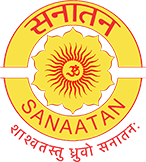- Home
-
Sanaatan Society
-
Philosophy
- Sanaatan-Scriptures
- Buddha-Scriptures
- Jain-Scriptures
- Sikh-Scriptures
- Other Sanaatan Scriptures
- Sanaatan-Common Knowledge
- Buddha-Practices
- Jain-Practices
- Sikh-Practices
- Denominations
- Additional Topics
- History
- Struggle For Survival
- Arts & Science
- Customs & Traditions
-
Philosophy
- Quick Look-Ups
- Shop
- Forums
- Home
-
Sanaatan Society
-
Philosophy
- Sanaatan-Scriptures
- Buddha-Scriptures
- Jain-Scriptures
- Sikh-Scriptures
- Other Sanaatan Scriptures
- Sanaatan-Common Knowledge
- Buddha-Practices
- Jain-Practices
- Sikh-Practices
- Denominations
- Additional Topics
- History
- Struggle For Survival
- Arts & Science
- Customs & Traditions
-
Philosophy
- Quick Look-Ups
- Shop
- Forums
Need volunteers to add content, review content, to work on social media. Conatct at sansansthan@gmail.com.Need volunteers to add content, review content, to work on social media. Conatct at sansansthan@gmail.com
सामग्री जोड़ने, प्रकाशन से पहले सामग्री की समीक्षा करने, सोशल मीडिया आदि पर काम करने के लिए स्वयंसेवकों की आवश्यकता है। sansansthan@gmail.com पर संपर्क करें।.सामग्री जोड़ने, प्रकाशन से पहले सामग्री की समीक्षा करने, सोशल मीडिया आदि पर काम करने के लिए स्वयंसेवकों की आवश्यकता है। sansansthan@gmail.com पर संपर्क करें।
Need volunteers to add content, review content, to work on social media. Conatct at sansansthan@gmail.com.Need volunteers to add content, review content, to work on social media. Conatct at sansansthan@gmail.com
सामग्री जोड़ने, प्रकाशन से पहले सामग्री की समीक्षा करने, सोशल मीडिया आदि पर काम करने के लिए स्वयंसेवकों की आवश्यकता है। sansansthan@gmail.com पर संपर्क करें।.सामग्री जोड़ने, प्रकाशन से पहले सामग्री की समीक्षा करने, सोशल मीडिया आदि पर काम करने के लिए स्वयंसेवकों की आवश्यकता है। sansansthan@gmail.com पर संपर्क करें।
- Home >>
- Sanaatan Society >>
- Philosophy >>
- Sanaatan-Common Knowledge >>
- Sanaatani Pillars >>
- Kumbh-Mela
- Sanaatan Society
- Quick Look-Ups
- Shop
Kumbh-Mela
It is a major teerth and festival. It is celebrated in a cycle of approximately 12 years, to celebrate every revolution Brihaspati (Jupiter) completes, at four river-bank sites: Prayagraj (Ganges-Yamuna-Sarasvati rivers confluence), Haridwar (Ganges), Nashik (Godavari), and Ujjain (Shipra). The festival is marked by a ritual dip in the waters. It is also a celebration of community commerce with numerous fairs, education, religious discourses by saints, mass gatherings of monks, and entertainment.
This mela along with other large gatherings enables Sanaatan Society to re-orient itself to account for changing times. Many saints communicate with people is an easy-to-understand language and re-enforces the Sanaatan Philosophy. Some of the significant observations about Kumbh Mela:
- This eliminates the need for reading and writing skills.
- Many debates also take place, in which changes to customs and traditions may be discussed as needed and corrective actions/ recommendation made for the society to follow.
- Guru-Shishya relationship is also established.
- People from all areas come and inter-mingle, which helps in creation of an accepting/ tolerant society.
- People of all castes/ varns join, which nullifies the theory about hierarchy of castes in Sanaatan Society.
- Lot of trade happens, which enables adoption of good technical know-how and learning.
Though not sure when it started, as per some account, Shri Adi Shankaracharya started it. [By some authentic source, Adi Shankaracharya was around 500 BC and not 500 AD].
Some links:
| https://en.wikipedia.org/wiki/Kumbh_Mela | Wikipedia Link |
| https://isha.sadhguru.org/us/en/wisdom/article/kumbha-mela-the-greatest-gathering | Sad Guru explains science behind this |
| https://www.kumbhmela.com/history-of-the-kumbh-mela/# | Has references to scriptures. |
Copyright notice – Sanaatan Website, Contents, and Materials
This website and its contents; and materials produces by Sanaatan Sansthaan, physical, audio-visual, or in any other form (Sansthan Material); are copyrights of Sanaatan Sansthaan - © Sanaatan Sansthaan-2022. All rights reserved.
Any distribution or reproduction of part or all of the contents and materials in any form is prohibited other than the following:
- you may print or download to a local hard disk extracts for your personal and non-commercial use only, and
- you may copy the content of the website and Sansthan Material to individual third parties for their personal and non-commercial use, but only if you acknowledge the website and Sanaatan Sansthan as the source of the material.
You may not, except with our express written permission, distribute or commercially exploit the content. Nor may you transmit it or store it in any other website or in any other form of electronic retrieval system.
To serve you better the site uses Cookies and records your preferences as well as the pages you visit. We don't share your personal information with anyone.
